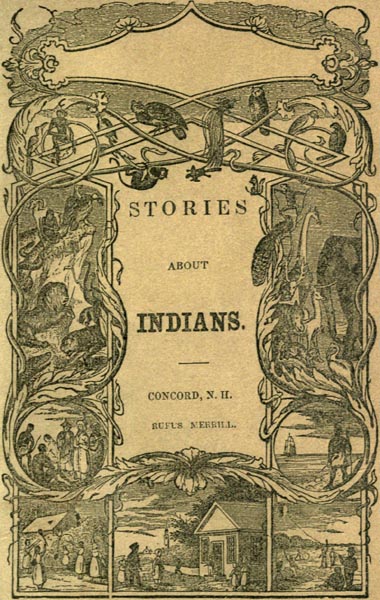
[Pg 1]
STORIES
ABOUT
INDIANS.
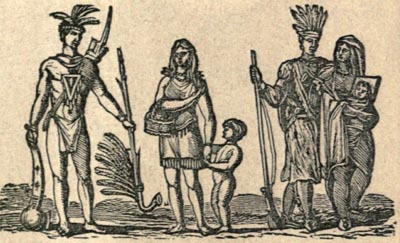
CONCORD, N. H.:
PUBLISHED BY MERRIAM & MERRILL
1854.
[Pg 2]
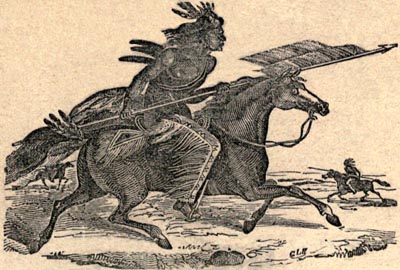
The above picture represents Indians hunting Buffalo.
[Pg 3]
STORIES
ABOUT
INDIANS.
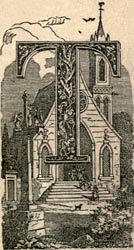
HE Indians were formerly lords of the soil we now occupy, and obtained asubsistence principally by hunting and fishing.
They generally lived in villages, containing from fifty to five hundredfamilies. Their houses, called wigwams, were usually constructed of[Pg 4]poles, one end being driveninto the ground, and the other bent over soas to meet another fastened in like manner; both being joined together atthe top, and covered with the bark of trees. Small holes were left openfor windows, which were closed in bad weather with a piece of bark. Theymade their fire in the centre of the wigwam, leaving a small hole for achimney in the top of the roof.
[Pg 5]They had no chairs, but sat upon skins, or mats, spread upon the ground,which also served them for beds. Their clothes were principally made ofthe skins of animals, which in winter were sewed together with the furside turned inwards.
The Indians were very fond of trinkets and ornaments, and often decoratedtheir heads with feathers, while fine polished shells were suspended fromtheir ears.
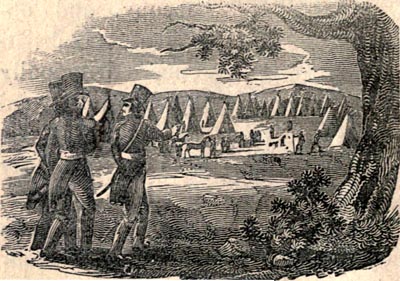
Indian Village.
A PAWNEE BRAVE.
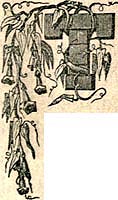
HE following anecdote is related of a Pawnee brave, or warrior, (son ofRed Knife.)
At the age of twenty-one, the heroic deeds of this brave had acquired[Pg 6]for him in his nation therank of the bravest of the braves. The savagepractice of torturing and burning to death their prisoners existed in thisnation. An unfortunate female of the Paduca nation, taken in war, wasdestined to this horrid death.
Just when the funeral pile was to be kindled, this young warrior, havingunnoticed prepared two fleet horses, with the necessary provisions, sprangfrom his seat, liberated the victim, seized her in his arms, placed her on...